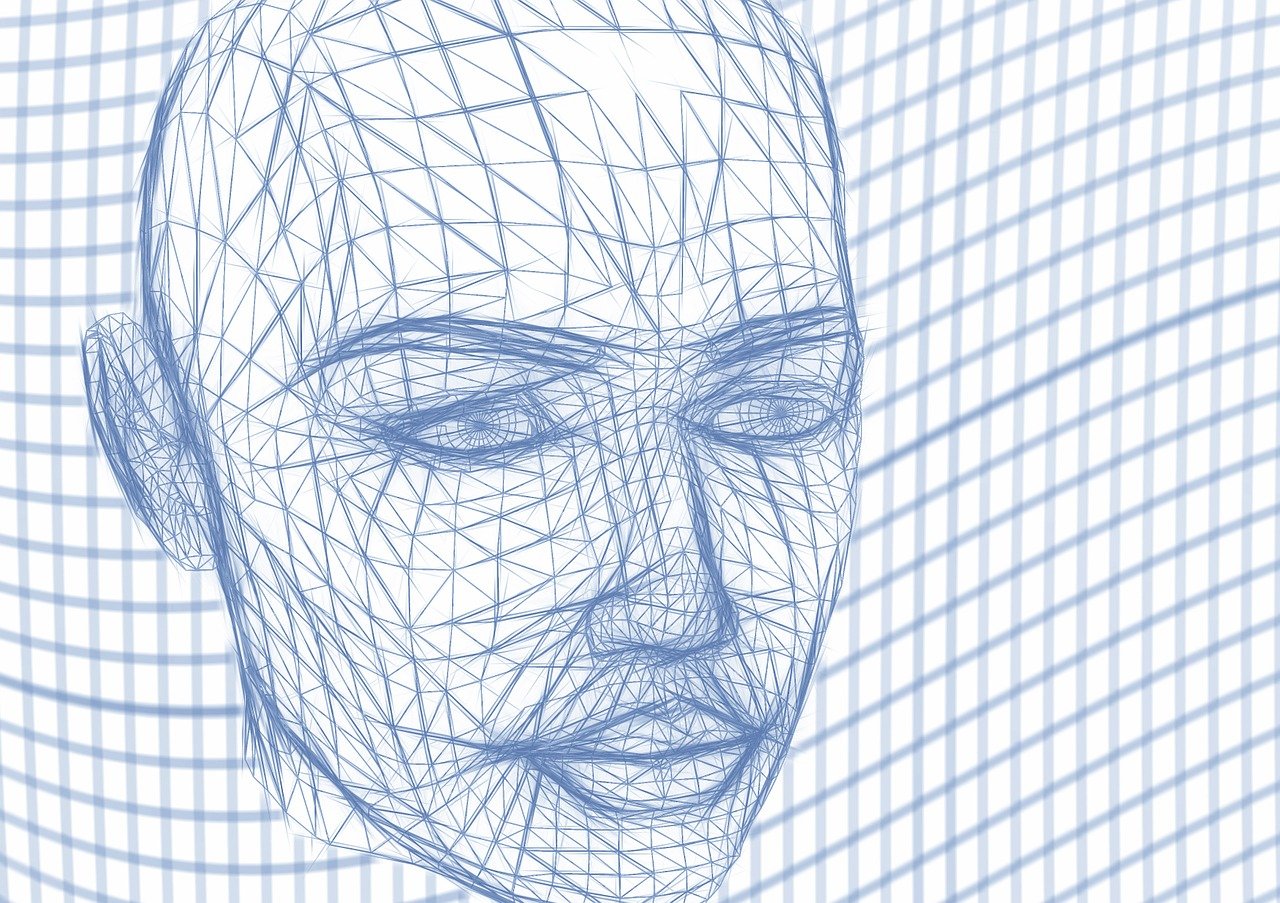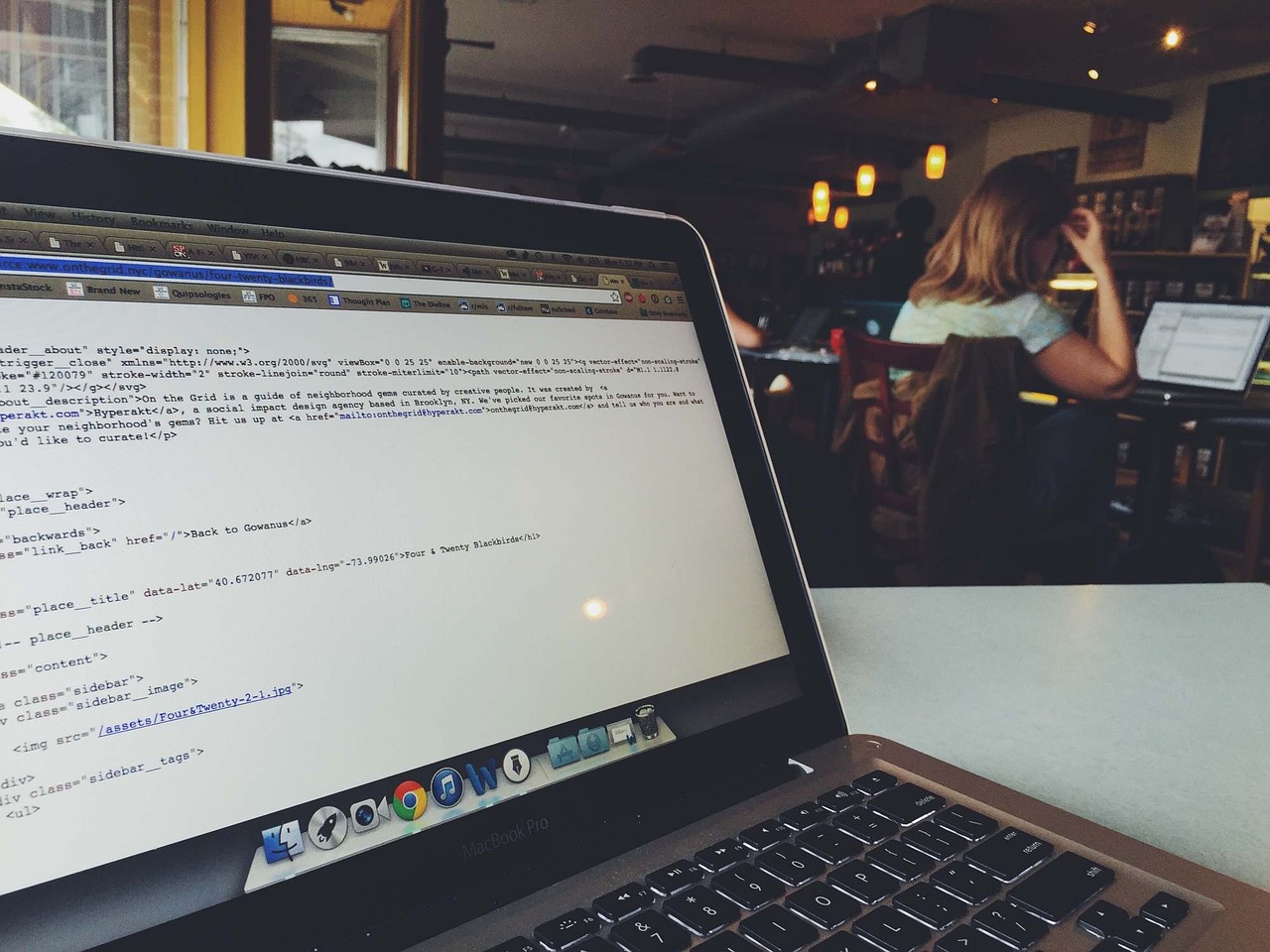Autoencoders have emerged as a powerful tool in the realm of machine learning and artificial intelligence, enabling efficient data compression and reconstruction across various applications. In this article, we’ll delve into the fundamental concepts behind autoencoders, exploring their architecture, diverse types, and practical uses. By understanding autoencoders, you’ll gain insight into how these neural network models facilitate dimensionality reduction, enhance data processing, and contribute to advancements in fields like image recognition, natural language processing, and beyond. Join us as we unravel the mechanisms and benefits of autoencoders, providing a comprehensive tutorial that highlights their significance in today’s data-driven world.
1. Understanding Autoencoders: Foundations and Core Concepts
Autoencoders are a type of artificial neural network used to learn efficient codings of unlabeled data. Developed as a technique for unsupervised learning, autoencoders have garnered significant attention for their ability to perform data compression and reconstruction tasks effectively. At the foundational level, an autoencoder network consists of two primary components: the encoder and the decoder.
The encoder compresses the input data into a latent-space representation, effectively reducing its dimensionality. This compressed form is often referred to as the “bottleneck” because it forces the network to prioritize the most relevant features of the data. By constraining the dimensionality of the encoded representation, autoencoders ensure the model only captures the pertinent structures in the data, thus facilitating both compression and abstraction.
Here’s a simple representation of an autoencoder architecture:
import tensorflow as tf
from tensorflow.keras.layers import Input, Dense
from tensorflow.keras.models import Model
# Define the input layer
input_layer = Input(shape=(input_dim,))
# Encoder: Stack of layers that compress the input data
encoded = Dense(128, activation='relu')(input_layer)
encoded = Dense(64, activation='relu')(encoded)
bottleneck = Dense(32, activation='relu')(encoded)
# Decoder: Stack of layers that reconstruct the input data from the bottleneck
decoded = Dense(64, activation='relu')(bottleneck)
decoded = Dense(128, activation='relu')(decoded)
output_layer = Dense(input_dim, activation='sigmoid')(decoded)
# Building the autoencoder model
autoencoder = Model(inputs=input_layer, outputs=output_layer)
autoencoder.compile(optimizer='adam', loss='mse')
print(autoencoder.summary())
In traditional settings, the encoder consists of multiple dense or convolutional layers, each progressively reducing the dimensionality of the input data. The decoder, on the other hand, mirrors the encoder’s structure but in reverse, transforming the low-dimensional latent-space representation back to its original high-dimensional input form.
A pivotal aspect of understanding autoencoders is grasping the optimization problem they solve. During training, the objective is to minimize the reconstruction error, typically measured by loss functions like Mean Squared Error (MSE) or Binary Crossentropy, depending on the task. This ensures that the output from the decoder is as close as possible to the original input data.
Autoencoders come in various flavors, each designed to cater to specific needs and improvements over the basic model. Variants like Sparse Autoencoders, Denoising Autoencoders, and Variational Autoencoders introduce additional constraints or modifications in the architecture to make the model more robust, interpretable, or suitable for probabilistic modeling.
For more intricate details about these architectures, you can explore the official TensorFlow documentation on autoencoders here.
The applicability of autoencoders extends beyond mere dimensionality reduction. They serve as the backbone for many advanced machine learning tasks such as image denoising, anomaly detection, data compression, and feature extraction.
By understanding the foundational elements of autoencoders, including their architecture, optimization objectives, and diverse variants, you will be well-equipped to leverage this powerful technique in your machine learning and data processing workflows.
2. Data Compression Techniques Using Autoencoders
Autoencoders are a class of artificial neural networks designed to learn efficient codings of input data. Specifically, they are highly effective for data compression techniques, capturing the essence of the input data with a reduced number of dimensions while maintaining the ability to reconstruct the original data.
Encoder and Decoder Components:
The autoencoder architecture consists of two main components: the encoder and the decoder. The encoder compresses the input data into a latent-space representation, often referred to as the bottleneck layer. The decoder then reconstructs the original data from this compressed representation.
Latent-Space Representation:
The latent-space representation is a lower-dimensional space that holds the compressed form of the data. By leveraging this compact representation, autoencoders can significantly reduce the data’s dimensionality, leading to compression. The latent space is crucial for performance—it should retain the essential information needed to reconstruct the input data accurately.
Compression Rate and Quality:
The compression rate and quality depend on various factors, such as the size of the latent-space representation and the architecture of the encoder-decoder network. A smaller latent space generally results in higher compression but may lead to a loss of critical details. Conversely, a larger latent space offers better reconstruction but less compression.
Types of Autoencoders for Compression:
- Undercomplete Autoencoders: These aim to find a compressed lower-dimensional representation of the data without explicitly regularizing the code. The size of the latent space is less than the input dimensions, leading to natural compression.
- Variational Autoencoders (VAEs): These introduce regularization by enforcing a distribution over the latent space, making the representation more robust and expressive. VAEs are particularly helpful in generating new data samples similar to the input data.
- Sparse Autoencoders: These enforce sparsity constraints on the hidden units, making only a few units active at a time during encoding. This sparsity leads to an efficient and compact representation of the data.
Example in Python Using TensorFlow:
Here is a simple example of an undercomplete autoencoder implemented in Python using TensorFlow:
import tensorflow as tf
from tensorflow.keras.layers import Input, Dense
from tensorflow.keras.models import Model
# Define the dimensions
input_dim = 784 # example for MNIST dataset
encoding_dim = 32 # compressed representation size
# Input placeholder
input_img = Input(shape=(input_dim,))
# Encoder layers
encoded = Dense(encoding_dim, activation='relu')(input_img)
# Decoder layers
decoded = Dense(input_dim, activation='sigmoid')(encoded)
# Autoencoder model
autoencoder = Model(input_img, decoded)
# Compile the model with appropriate loss function and optimizer
autoencoder.compile(optimizer='adam', loss='binary_crossentropy')
# Assume X_train is your training data
# autoencoder.fit(X_train, X_train, epochs=50, batch_size=256, shuffle=True)
# Extracting the encoder part
encoder = Model(input_img, encoded)
For a complete guide on configuring and fine-tuning an autoencoder in TensorFlow, you can refer to the official TensorFlow documentation.
Best Practices:
- Hyperparameter Tuning: The architecture of the autoencoder should be carefully designed and tuned, including the number of layers, the activation functions, and the size of each layer.
- Weight Regularization: Techniques such as L1 or L2 regularization can help to avoid overfitting.
- Normalization: Normalize input data to a range [0, 1] or [-1, 1] to improve training stability and performance.
- Early Stopping: Utilize techniques like early stopping to prevent overfitting during training.
Autoencoders provide a robust and flexible framework for data compression, significantly benefiting applications requiring data reduction and efficient storage. By leveraging different kinds of autoencoders, practitioners can achieve a balance between compression rate and reconstruction quality tailored to their specific use cases.
Note: Ensure to consult the specific architectures and regularization techniques best suited for your data and use case by reviewing literature and resources like TensorFlow’s documentation and research papers.
3. Autoencoders for Data Reconstruction: Methods and Applications
Autoencoders are invaluable tools for data reconstruction, enabling the recreation of input data from compressed representations. This process involves several sophisticated methods and has a wide range of applications across different fields.
Methods of Data Reconstruction with Autoencoders
In an autoencoder, the reconstruction phase is handled by the decoder component. The decoder takes the compressed, lower-dimensional representation generated by the encoder and attempts to reconstruct the original input as accurately as possible. The quality and fidelity of the reconstructed data greatly depend on the network’s architecture and the training process.
- Loss Functions: The most critical aspect of ensuring high-quality data reconstruction is the choice of loss function. Common loss functions include Mean Squared Error (MSE) and Binary Cross Entropy (BCE). MSE is typically used for continuous data and calculates the average squared difference between the original input and the reconstructed output.
import torch.nn.functional as F def reconstruction_loss(original, reconstruction): return F.mse_loss(reconstruction, original)For binary data, BCE can be more appropriate, particularly when the input values are within the [0,1] range.
import torch.nn.functional as F def reconstruction_loss_binary(original, reconstruction): return F.binary_cross_entropy(reconstruction, original) - Regularization Techniques: Techniques such as dropout, L2 regularization, and sparse autoencoders can help prevent overfitting, ensuring that the autoencoder generalizes well and produces high-quality reconstructions on new, unseen data.
import torch class SparseAutoencoder(torch.nn.Module): def __init__(self): super(SparseAutoencoder, self).__init__() self.encoder = torch.nn.Sequential( torch.nn.Linear(784, 256), torch.nn.ReLU(), torch.nn.Linear(256, 64), torch.nn.ReLU() ) self.decoder = torch.nn.Sequential( torch.nn.Linear(64, 256), torch.nn.ReLU(), torch.nn.Linear(256, 784), torch.nn.Sigmoid() ) def forward(self, x): x = self.encoder(x) x = self.decoder(x) return x
Applications of Data Reconstruction Using Autoencoders
- Image Denoising: Autoencoders can be leveraged to remove noise from images. The network is trained on noisy and clean image pairs, learning to recreate a noiseless image from the noisy input. Once trained, the decoder’s output will ideally be a clean version of the input image.
from keras.layers import Input, Conv2D, MaxPooling2D, UpSampling2D from keras.models import Model input_img = Input(shape=(28, 28, 1)) # Encoder part x = Conv2D(32, (3, 3), activation='relu', padding='same')(input_img) x = MaxPooling2D((2, 2), padding='same')(x) x = Conv2D(32, (3, 3), activation='relu', padding='same')(x) encoded = MaxPooling2D((2, 2), padding='same')(x) # Decoder part x = Conv2D(32, (3, 3), activation='relu', padding='same')(encoded) x = UpSampling2D((2, 2))(x) x = Conv2D(32, (3, 3), activation='relu', padding='same')(x) x = UpSampling2D((2, 2))(x) decoded = Conv2D(1, (3, 3), activation='sigmoid', padding='same')(x) autoencoder = Model(input_img, decoded) autoencoder.compile(optimizer='adam', loss='binary_crossentropy') - Anomaly Detection: In scenarios like fraud detection or industrial equipment monitoring, autoencoders can be trained on normal behavior data. When the model attempts to reconstruct anomalous data, reconstruction errors spike, thus identifying the anomalies.
threshold = calculate_threshold(training_data, model) def is_anomaly(data_point, model, threshold): reconstruction = model.predict(data_point) error = reconstruction_loss(data_point, reconstruction) return error > threshold - Missing Data Imputation: By reconstructing data, autoencoders can also fill in missing values. For instance, in sensor networks or healthcare datasets, autoencoders can predict and replace missing data points with estimated values derived from the learned patterns.
from sklearn.impute import SimpleImputer import numpy as np known_values = np.array([[1, 2], [3, np.nan], [7, 6], [np.nan, 5]]) imputer = SimpleImputer(strategy='mean') complete_data = imputer.fit_transform(known_values)
Autoencoders have demonstrated remarkable capabilities in data reconstruction, providing substantial advantages across various applications by enabling systems to cope with incomplete, noisy, or anomalous data.
4. Types of Autoencoders: Variations and Use Cases
Autoencoders are a type of artificial neural network used to learn efficient codings of unlabeled data (unsupervised learning). They automatically learn to compress data into a latent-space representation and then reconstruct the output from this representation. Various types of autoencoders have been developed to optimize different aspects and applications of data compression and reconstruction. Here’s a breakdown of the main types and their specific use cases:
1. Vanilla Autoencoders
Structure: Consist of an encoder and a decoder. The encoder reduces the input into a compact latent-space representation, while the decoder reconstructs the input from this representation.
Use Cases: General data compression and noise reduction.
Example:
import tensorflow as tf
from tensorflow.keras.models import Model
from tensorflow.keras.layers import Input, Dense
# Encoder
input_dim = Input(shape=(original_dim,))
encoded = Dense(encoding_dim, activation='relu')(input_dim)
# Decoder
decoded = Dense(original_dim, activation='sigmoid')(encoded)
# Autoencoder Model
autoencoder = Model(inputs=input_dim, outputs=decoded)
2. Sparse Autoencoders
Structure: Similar to vanilla autoencoders but with a sparsity constraint on the latent space. This forces the model to learn only a few active features for representing the data.
Use Cases: Feature selection and extraction, anomaly detection.
Example:
from tensorflow.keras.regularizers import l1
encoded = Dense(encoding_dim, activation='relu', activity_regularizer=l1(10e-5))(input_dim)
decoded = Dense(original_dim, activation='sigmoid')(encoded)
autoencoder = Model(inputs=input_dim, outputs=decoded)
3. Convolutional Autoencoders (CAE)
Structure: Use convolutional layers. They are particularly effective for 2D image data, as they preserve spatial hierarchies in the data.
Use Cases: Image compression, image denoising.
Example:
from tensorflow.keras.layers import Conv2D, MaxPooling2D, UpSampling2D
# Encoder
x = Conv2D(16, (3, 3), activation='relu', padding='same')(input_img)
x = MaxPooling2D((2, 2), padding='same')(x)
# Decoder
x = Conv2D(16, (3, 3), activation='relu', padding='same')(x)
x = UpSampling2D((2, 2))(x)
decoded = Conv2D(1, (3, 3), activation='sigmoid', padding='same')(x)
autoencoder = Model(input_img, decoded)
4. Variational Autoencoders (VAE)
Structure: Introduce probabilistic elements to the latent space, aiming to model the data distribution. They use two parts in the encoder: a mean and a variance vector, resulting in a more interpretable continuous latent space.
Use Cases: Generative tasks, anomaly detection, data synthesis.
Example:
import tensorflow.keras.backend as K
def sampling(args):
z_mean, z_log_var = args
batch = K.shape(z_mean)[0]
dim = K.int_shape(z_mean)[1]
epsilon = K.random_normal(shape=(batch, dim), mean=0., stddev=1.0)
return z_mean + K.exp(0.5 * z_log_var) * epsilon
z_mean = Dense(latent_dim)(h)
z_log_var = Dense(latent_dim)(h)
z = Lambda(sampling, output_shape=(latent_dim,))([z_mean, z_log_var])
5. Denoising Autoencoders
Structure: Trained to remove noise from the input data by corrupting the input and teaching the autoencoder to reconstruct the original data.
Use Cases: Noise reduction in images and signals.
Example:
# Adding Gaussian noise
noisy_input = Input(shape=(original_dim,))
noisy = GaussianNoise(0.1)(noisy_input)
# Encoder and Decoder
encoded = Dense(encoding_dim, activation='relu')(noisy)
decoded = Dense(original_dim, activation='sigmoid')(encoded)
autoencoder = Model(input=noisy_input, output=decoded)
6. Contractive Autoencoders (CAE)
Structure: Add a contraction penalty to ensure the learned representation is robust to input variations.
Use Cases: Data robustness, feature learning.
Example:
from tensorflow.keras import regularizers
encoded = Dense(encoding_dim, activation='relu', activity_regularizer=regularizers.l1(10e-3))(input_img)
decoded = Dense(original, activation='sigmoid')(encoded)
Each type of autoencoder is designed to address a specific aspect of data handling, compression, and reconstruction, providing flexibility and optimization for various tasks in machine learning and data analysis.
5. Neural Network Autoencoders in Deep Learning
Autoencoders are a class of neural network architecture particularly suited for unsupervised learning tasks. In the realm of deep learning, neural network autoencoders play a pivotal role in learning efficient data codings directly from the data itself, making them a fundamental tool for various applications in data compression and reconstruction.
Architecture and Components
The architecture of an autoencoder consists of two primary components:
- Encoder: This part of the network takes the input data and compresses it into a smaller, dense representation known as the latent space or code. The encoder typically includes several layers of neurons that progressively reduce the dimensionality of the input data.
- Decoder: The decoder network takes this compressed representation and reconstructs it back to the original input data’s dimensions. The goal here is to make this reconstruction as similar to the original input as possible.
Basic Structure
import tensorflow as tf
from tensorflow.keras import layers
# Encoder
input_data = tf.keras.Input(shape=(784,)) # Example input for MNIST (28x28 pixels, flattened)
encoded = layers.Dense(512, activation='relu')(input_data)
encoded = layers.Dense(256, activation='relu')(encoded)
encoded = layers.Dense(128, activation='relu')(encoded)
latent_space = layers.Dense(32, activation='relu')(encoded) # Latent space with reduced dimensionality
# Decoder
decoded = layers.Dense(128, activation='relu')(latent_space)
decoded = layers.Dense(256, activation='relu')(decoded)
decoded = layers.Dense(512, activation='relu')(decoded)
output = layers.Dense(784, activation='sigmoid')(decoded)
# Autoencoder Model
autoencoder = tf.keras.Model(input_data, output)
autoencoder.compile(optimizer='adam', loss='binary_crossentropy')
Deep Learning Benefits
Using deep layers in autoencoders allows the model to learn complex representations and is particularly useful when dealing with high-dimensional data like images, audio, and other sensory data. The depth of the network enables the autoencoder to capture intricate patterns and features, fostering better compression and more accurate reconstructions.
Advanced Variations
Deep learning autoencoders come in various advanced forms:
- Convolutional Autoencoders: Useful for image data, these integrate convolutional layers to maintain spatial hierarchies.
# Convolutional Encoder encoded = layers.Conv2D(32, (3, 3), activation='relu', padding='same')(input_data) encoded = layers.MaxPooling2D((2, 2), padding='same')(encoded) # Add more layers as needed... # Convolutional Decoder decoded = layers.Conv2D(32, (3, 3), activation='relu', padding='same')(latent_space) decoded = layers.UpSampling2D((2, 2))(decoded) # Add more layers as needed... - Variational Autoencoders (VAEs): Incorporate probabilistic elements to generate new data instances similar to the input data.
- Sparse Autoencoders: Introduce sparsity constraints to the latent space to force the model to use fewer activations, often leading to feature extraction benefits.
- Denoising Autoencoders: Designed to reconstruct original data from noisy inputs, enhancing data preprocessing steps.
Implementation and Libraries
Frameworks like TensorFlow and PyTorch provide extensive support for building and training deep learning autoencoders. The Keras API, for instance, simplifies the process significantly with its intuitive high-level functions.
Further Reading and Documentation
To delve deeper into the practical implementation of neural network autoencoders, refer to the official TensorFlow documentation:
Practical Considerations
When transitioning from shallow to deep architectures, various challenges arise, such as the risk of overfitting and the computational demands of training deeper networks. Techniques like early stopping, dropout layers, and batch normalization are often employed to mitigate these issues.
# Adding Dropout and Batch Normalization
encoded = layers.Dense(256, activation='relu')(encoded)
encoded = layers.Dropout(0.3)(encoded) # Dropout layer
encoded = layers.BatchNormalization()(encoded) # Batch Normalization
By understanding and utilizing these advanced deep learning techniques in autoencoders, practitioners can significantly improve the performance and applicability of their models in complex real-world scenarios.
6. Training Autoencoders: Strategies and Best Practices
Training autoencoders involves several key strategies and best practices to ensure they effectively learn data representation for compression and reconstruction. Here, we delve into the essential methodologies for optimizing autoencoder performance.
6. Training Autoencoders: Strategies and Best Practices
Data Preprocessing
Prior to training, data should be normalized or standardized to have zero mean and unit variance. This process accelerates convergence and enhances the model’s robustness. Techniques like Min-Max Scaling or Z-Score Normalization are commonly employed.
Example:
from sklearn.preprocessing import StandardScaler
scaler = StandardScaler()
scaled_data = scaler.fit_transform(raw_data)
Network Architecture
Choosing the right autoencoder architecture is pivotal. Simpler data might be well-represented with shallow networks, while complex data often requires deep autoencoders. Layers should be symmetrically designed with a careful balance between depth and width to avoid underfitting or overfitting.
Activation Functions
Non-linear activation functions such as ReLU (Rectified Linear Unit) or its variants (Leaky ReLU, PReLU) are typically used for hidden layers. For the output layer, Sigmoid is popular especially when the data is normalized between 0 and 1, while Tanh can be used for standardized data.
Example:
import tensorflow as tf
from tensorflow.keras.models import Model
from tensorflow.keras.layers import Input, Dense
input_layer = Input(shape=(input_dim,))
hidden_layer = Dense(encoding_dim, activation='relu')(input_layer)
output_layer = Dense(input_dim, activation='sigmoid')(hidden_layer)
autoencoder = Model(inputs=input_layer, outputs=output_layer)
Loss Functions
The choice of the loss function is crucial for training. Mean Squared Error (MSE) is the most broadly used for continuous data. For binary data, Binary Cross-Entropy Loss could be more appropriate.
Example:
autoencoder.compile(optimizer='adam', loss='binary_crossentropy')
Regularization Techniques
Regularization helps prevent overfitting. L1/L2 regularization, Dropout, and early stopping can be employed. Additionally, techniques such as adding Gaussian noise encourage the model to learn salient features robustly.
Example:
from tensorflow.keras.layers import Dropout
hidden_layer = Dense(encoding_dim, activation='relu')(input_layer)
dropout_layer = Dropout(0.2)(hidden_layer)
output_layer = Dense(input_dim, activation='sigmoid')(dropout_layer)
Hyperparameter Tuning
Optimize hyperparameters like learning rate, batch size, and epoch count through experimentation. Libraries like Optuna or Hyperopt can automate this process.
Example with Optuna:
import optuna
def objective(trial):
# Define the hyperparameters to search through Optuna
learning_rate = trial.suggest_loguniform('learning_rate', 1e-5, 1e-2)
encoding_dim = trial.suggest_int('encoding_dim', 32, 128)
# Build the autoencoder model with the suggested hyperparameters
input_layer = Input(shape=(input_dim,))
hidden_layer = Dense(encoding_dim, activation='relu')(input_layer)
output_layer = Dense(input_dim, activation='sigmoid')(hidden_layer)
autoencoder = Model(inputs=input_layer, outputs=output_layer)
autoencoder.compile(optimizer=tf.keras.optimizers.Adam(learning_rate=learning_rate), loss='binary_crossentropy')
# Training logic goes here
return evaluation_metric # Return evaluation metric for trial
study = optuna.create_study(direction='minimize')
study.optimize(objective, n_trials=50)
Visualization and Monitoring
Monitor the model’s performance using training and validation loss curves to avoid overfitting. Tools like TensorBoard are highly useful for real-time tracking.
Example with TensorBoard:
from tensorflow.keras.callbacks import TensorBoard
tensorboard_callback = TensorBoard(log_dir="./logs")
autoencoder.fit(train_data, train_data, epochs=50, batch_size=256, validation_data=(val_data, val_data), callbacks=[tensorboard_callback])
Adhering to these strategies and practices will help in effectively training autoencoders for superior data compression and reconstruction. Consult the official TensorFlow documentation and Keras documentation for comprehensive guides and additional techniques.
7. Autoencoder Applications: Real-World Examples and Benefits
- Autoencoder Applications: Real-World Examples and Benefits
Autoencoders have transcended theoretical appeal and found many practical applications in various industries due to their unique capabilities in data compression and reconstruction. Here are some real-world examples and benefits of using autoencoders:
Image Denoising:
Autoencoders are particularly effective for image denoising. By training on noisy and clean images, an autoencoder can learn to eliminate noise from a new image. This application is prevalent in the medical and surveillance sectors, where clarity of images is paramount.
import numpy as np
import matplotlib.pyplot as plt
from keras.layers import Input, Conv2D, MaxPooling2D, UpSampling2D
from keras.models import Model
# define encoder layers
input_img = Input(shape=(28, 28, 1))
x = Conv2D(32, (3, 3), activation='relu', padding='same')(input_img)
x = MaxPooling2D((2, 2), padding='same')(x)
x = Conv2D(32, (3, 3), activation='relu', padding='same')(x)
encoded = MaxPooling2D((2, 2), padding='same')(x)
# define decoder layers
x = Conv2D(32, (3, 3), activation='relu', padding='same')(encoded)
x = UpSampling2D((2, 2))(x)
x = Conv2D(32, (3, 3), activation='relu', padding='same')(x)
x = UpSampling2D((2, 2))(x)
decoded = Conv2D(1, (3, 3), activation='sigmoid', padding='same')(x)
# define autoencoder model
autoencoder = Model(input_img, decoded)
autoencoder.compile(optimizer='adam', loss='binary_crossentropy')
autoencoder.summary()
Anomaly Detection:
In manufacturing and cybersecurity, autoencoders are used to detect anomalies. An autoencoder trained on “normal” data will have high reconstruction error for “anomalous” data, making it easier to identify outliers.
Dimensionality Reduction:
Autoencoders can be a more effective alternative to Principal Component Analysis (PCA) for dimensionality reduction. They can learn non-linear relationships between features, providing better representation and preserving important data characteristics.
Recommendation Systems:
In e-commerce, autoencoders can enhance recommendation systems by learning user preferences effectively. This can be achieved by compressing user interaction histories and discovering latent patterns.
Biomedical Signal Processing:
EEG and ECG signal denoising and feature extraction benefit immensely from autoencoders. By compressing the high-dimensional signal data, autoencoders help in isolating and identifying critical features for medical diagnostics.
The Keras library contains several autoencoder tutorials, including those for image denoising and anomaly detection, demonstrating both the flexibility and power of autoencoders in contemporary machine learning applications.
Benefits:
- Reduction in Storage Space: By compressing data, autoencoders reduce the required storage space, which is advantageous for handling large datasets.
- Improved Efficiency: Their ability to preprocess data into a more efficient form can significantly boost the performance of downstream tasks like visualization, clustering, and classification.
- Noise Reduction: By learning key features, autoencoders can act as robust filters to remove noise and improve data quality.
- Enhanced Data Understanding: Autoencoders can uncover hidden structures within the data, providing deeper insights and improving domain knowledge.
When designing applications utilizing autoencoders, it’s essential to balance the complexity of the architecture with the specific requirements of the task to fully capitalize on their benefits.
8. Future Trends in Autoencoders and AI
As artificial intelligence (AI) continues to evolve, the future of autoencoders increasingly looks promising with several exciting trends taking shape. Leveraging the foundational aspects of neural network autoencoders, researchers are exploring and innovating to enhance their capabilities in both data compression and data reconstruction.
One emerging trend is the integration of autoencoders with Generative Adversarial Networks (GANs). Known as Adversarial Autoencoders (AAEs), this combination leverages the generative capabilities of GANs to enhance the robustness and flexibility of autoencoders in unsupervised learning tasks. AAEs can generate more high-quality and realistic data reconstructions, making them highly valuable in applications like image synthesis and anomaly detection. For more details, you can refer to the original research paper on Adversarial Autoencoders.
Another noteworthy trend is the application of autoencoders in hybrid models for achieving better results in complex tasks such as speech recognition and natural language processing (NLP). For example, Variational Autoencoders (VAEs) are being combined with transformers to improve language modeling capabilities. This combination can provide significant improvements in generating coherent and contextually relevant text, paving the way for more advanced conversational AI systems and translators.
The use of autoencoders for unsupervised anomaly detection continues to gain ground. Future autoencoders are expected to incorporate more sophisticated architectures to differentiate between normal and anomalous data patterns efficiently. This path echoes advancements in sectors like cybersecurity, where detecting novel types of cyber threats and malware requires innovative approaches. For a concrete example, check out the implementation details and applications mentioned in the Keras documentation on anomaly detection with autoencoders.
Quantum machine learning (QML) is also poised to influence the field of autoencoders. Quantum autoencoders can optimize quantum circuits for data compression, promising a marked decrease in computational overhead while handling vast and complex datasets. This approach, although nascent, suggests a future where quantum autoencoders could become integral in high-performance computing environments.
Lastly, personalization and recommendation systems are predicted to benefit significantly from autoencoder advancements. By creating more accurate user profiles through personalized data compression and reconstruction, autoencoders will enable platforms to deliver more tailored content and product recommendations. Innovations in this space are well-documented in papers from leading tech conferences like NeurIPS.
It’s evident that the domain of autoencoders is brimming with potential growth areas, spanning various aspects of AI and beyond. Future trends show that the conception and application of more sophisticated models will continue to expand the horizons, providing deeper insights and more effective solutions in ways that are currently only being conceptualized.




